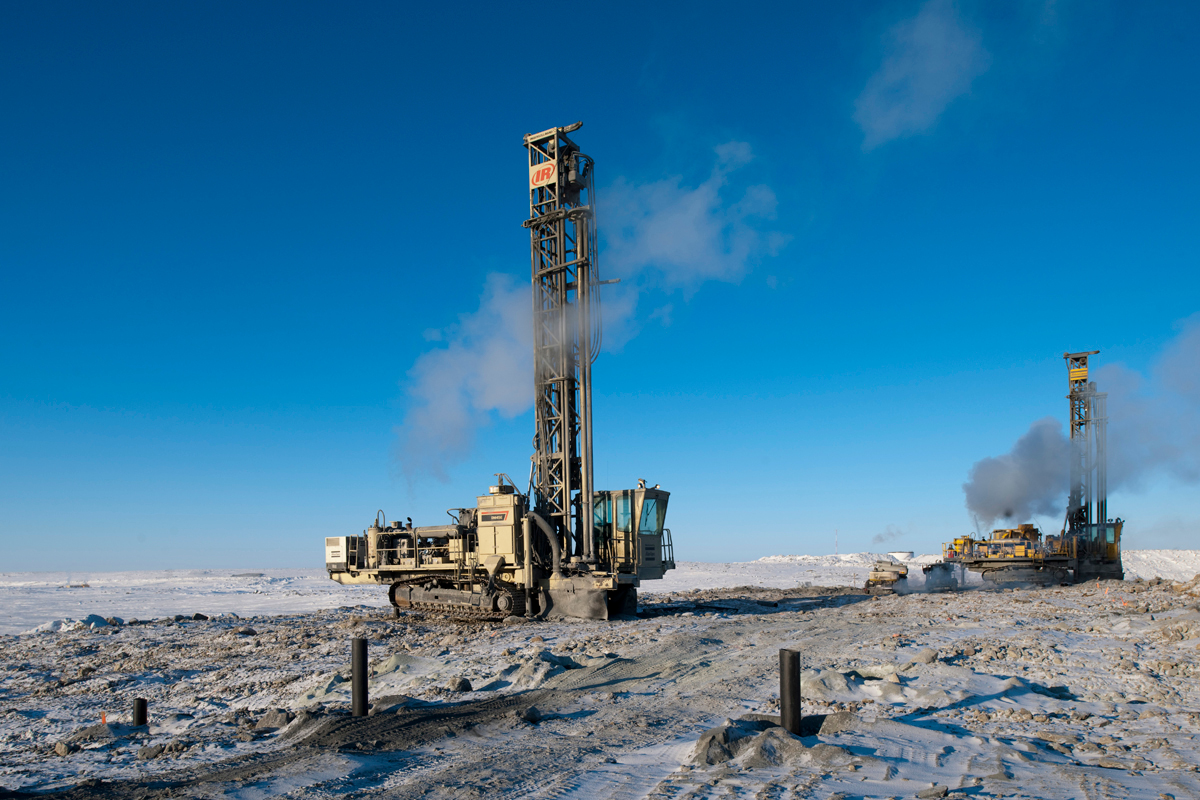DTH - Down the Hole Drilling

How does a DTH Hammer work?
In DTH drilling, the percussion mechanism – commonly called the hammer – is located directly above the drill bit. The drill pipes transmit the necessary feed force and rotation to the hammer and the bit, along with the fluid (air, water or drilling mud) used to actuate the hammer and flush the cuttings. The drill pipes are added to the drill string successively behind the hammer as the hole gets deeper.
The hammer is fully fluid actuated. It is composed of two mobile parts: a valve, controlling the flow and a piston that strikes on an impact surface directly linked to the bit. The hammer body gives straight and stable guidance of the drill bit.
There are three types of hammers, depending on the actuation fluid:
- Air hammers have first been developed to drill hard rock but are limited to shallow holes (< 200m);
- Water hammers have been developed by a Swedish company called Wassara. A lost water flow (between 55 and 744 L/min, depending on the hammer size) is necessary to actuate the hammer. It allows better performance (borehole control) and can drill deeper than air hammers;
- Hammers operated with drilling mud are currently developed by a French company called Drillstar Industries. They present the advantage of being able to drill on every existing rig using classical mud composition. Their ability to drill deep makes it a good technology to drill hard rock encountered in deep geothermal projects. An undergoing research project called ORCHYD, funded by the European Union (EU) under the Horizon 2020 programme will develop a new drilling technique, fully fluid driven, that combines the DTH mud hammer with a high pressure water jet system that cuts grooves in the rock along with the percussive action. That will help cut the rocks at greater depths in an efficient and safe manner, reducing the operational time for geothermal exploration and thus the total cost to utilize the geothermal energy.
DTH Drilling Applications
DTH products can be used in the following applications:
Mining-drill and blast holes in open pit mining, where the drill operator will drill several holes, then fill with explosives and detonate to lift rock allowing access to ore rock.
RC – Reverse Circulation – Mineral exploration and pit grade control (needs specialised reverse circulation hammers).
RAB – Rotary Air Blast – Mineral exploration using a conventional DTH Hammer.
GW – Geothermal bore holes and waterwells.
Oil and Gas – Deepwell bore holes: Air hammers can be used as long as cutting uplift and borehole stability are ensured. For deeper wells, new DTH technologies including water hammer and mudhammer can be used to improve drilling rates in hard rock.
Construction Industry – Pilings, footings and soft nailing.

